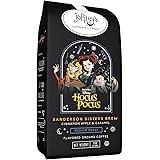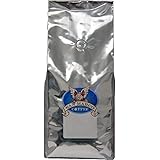Mastering the V60 Pour Over: A Simple Guide to Exceptional Coffee
For many coffee enthusiasts, the pursuit of the perfect cup often leads to the art of pour over brewing. It is reported that a consistent brew ratio of 1:16, meaning 20 grams of coffee to 320 grams of water, can unlock a deliciously balanced coffee experience. If a truly tasty cup of pour over coffee is desired, mastering this method, as demonstrated in the video above, becomes an essential skill for any home brewer.
The V60 pour over method is renowned for its ability to highlight the intricate flavors of specialty coffee. This approach allows for significant control over the brewing process, from water temperature to grind size, ensuring that a customized and superior cup can be achieved. Let’s delve deeper into the simple steps and underlying principles that make the V60 a favorite among coffee aficionados.
Setting the Stage for a Perfect V60 Brew
Before any brewing begins, it is crucial that the right conditions are established. The journey to a delightful pour over coffee starts with precise measurements and thoughtful preparation, setting the foundation for optimal extraction.
The Golden Ratio: Coffee to Water
One of the foundational elements of consistent coffee brewing is the brew ratio. As illustrated in the video, a 1:16 ratio serves as an excellent starting point for a balanced and flavorful cup. This means that for every 1 gram of coffee, 16 grams of water are used. For practical purposes, this translates to using 20 grams of coffee with 320 grams of water. These measurements are typically managed with a digital scale, which is considered an indispensable tool for pour over brewing, allowing for precision that hand-eye estimation simply cannot match.
Optimal Water Temperature and Heating
The temperature of the brewing water plays a critical role in coffee extraction. Water that is too cold will result in under-extracted coffee, leading to a sour taste, while water that is too hot can lead to over-extraction and bitterness. Generally, water heated just off the boil, ideally between 195°F and 205°F (90°C to 96°C), is considered ideal for pour over coffee. It is recommended that water is brought to a full boil and then allowed to cool for a moment or two, ensuring it is within this optimal range.
Pre-heating and Rinsing the Filter
A crucial, yet often overlooked, step is the rinsing of the paper filter. Once the filter is placed into the V60 brewer, hot water should be gently poured over it. This accomplishes two important things: first, it removes any papery taste that could otherwise impart an undesirable flavor to the coffee, and second, it pre-heats the brewer and the serving vessel below, helping to maintain the brewing temperature for a more stable extraction. The rinse water should then be discarded before adding the coffee grounds.
Grind Size: The Heart of Extraction for Pour Over Coffee
The grind size of your coffee beans directly impacts the rate of extraction. This element is so critical that slight adjustments can dramatically alter the taste of your pour over coffee. A suitable grind size is paramount for achieving the targeted 3:15 brew time and a balanced flavor profile.
Finding the “Medium to Coarse” Sweet Spot
For V60 pour over brewing, a grind size often described as “medium to coarse” is generally recommended. This can be visualized as being similar to kosher salt or coarse sand. If the grind is too fine, water will struggle to pass through, leading to over-extraction and a bitter, astringent taste. Conversely, if the grind is too coarse, water will flow too quickly, resulting in under-extraction and a sour, weak cup. It is often necessary for small adjustments to be made based on the specific beans, grinder, and desired taste.
The Role of a Quality Grinder
While the video focuses on the act of grinding, it is important to note that the quality of the grinder significantly affects the consistency of the grind. A burr grinder, whether manual or electric, is preferred over blade grinders because it produces uniform particle sizes. Uniformity ensures that all coffee particles extract at a similar rate, contributing to a more balanced and flavorful pour over coffee.
The Art of the Pour: Stages of V60 Brewing
The act of pouring water over the coffee grounds is where the magic of the V60 really happens. This process is divided into distinct phases, each serving a specific purpose in extracting the coffee’s rich flavors.
Phase 1: The Bloom (50g Water, 30 Seconds)
Once the 20 grams of freshly ground coffee are settled in the rinsed filter, the brewing process begins with the “bloom.” This involves pouring about 50 grams of hot water, just enough to fully saturate the grounds, in gentle circular motions. After this initial pour, a waiting period of approximately 30 seconds is observed. During the bloom, carbon dioxide gases, which are naturally trapped within the fresh coffee grounds, are released. This release of gas, often seen as bubbling, prepares the coffee bed for subsequent pours, allowing for a more even and effective extraction. Neglecting the bloom phase often results in an uneven and less flavorful pour over coffee.
Phase 2: The Second Pour (Up to 200g Water)
Following the bloom, the second pour is initiated. Water is carefully added in slow, gentle circular motions, aiming to reach a total weight of 200 grams on the scale. The circular motion ensures an even saturation of the coffee grounds. Once the 200-gram mark is reached, a gentle swirl of the V60 can be performed to flatten the coffee bed and aid in even extraction. A brief pause, typically 10 to 15 seconds, is often observed during which the water is allowed to draw down slightly, creating space for the final pour.
Phase 3: The Final Pour (Up to 320g Water)
The brewing concludes with the final pour, where water is added again in slow, continuous circular motions until the total target weight of 320 grams is reached. Maintaining a steady hand and a controlled pour rate is crucial during this stage. Once the 320-gram mark is hit, another gentle swirl can be given. The coffee is then allowed to finish dripping through the V60 brewer, collecting in the server below.
Evaluating Your Pour Over Coffee: Time and Taste
After the pour over coffee has finished dripping, it is important to evaluate the results. The brew time and the taste of the final cup provide valuable feedback, guiding future adjustments to perfect your brewing technique.
Target Brew Time: 3:15
A target brew time of approximately 3 minutes and 15 seconds is often aimed for with the 20g to 320g V60 recipe. The duration of the drip-out process is a strong indicator of whether the grind size was appropriate. If the coffee drains too quickly, for instance, in under 3 minutes, it is generally indicative that the grind size was too coarse. This suggests that the grounds offered too little resistance to the water flow, leading to under-extraction. Conversely, if the brew time extends beyond 3 minutes and 30 seconds, it typically means the grind was too fine, impeding water flow and potentially causing over-extraction. Adjustments to the grind size should be made incrementally to fine-tune the extraction rate.
Taste Adjustments: Sour vs. Bitter
Beyond the timing, the ultimate assessment of your pour over coffee comes from its taste. The flavor profile can reveal much about the extraction process:
- Sour Coffee: If the coffee tastes distinctly sour, resembling lemon or unripe fruit, it is often a sign of under-extraction. This typically occurs when the grind size is too coarse, preventing sufficient contact time between water and coffee. To remedy this, it is recommended that the grind size be made slightly finer to encourage more extraction.
- Bitter Coffee: A bitter taste, sometimes accompanied by a dry sensation at the back of the mouth, indicates over-extraction. This usually happens when the grind is too fine, leading to excessive contact time and the extraction of undesirable bitter compounds. In such cases, the grind size should be coarsened slightly to reduce extraction.
By understanding these common taste indicators, even subtle adjustments can lead to a significantly more enjoyable cup of pour over coffee. It is a process of refinement, where each brew provides an opportunity for learning and improvement.







